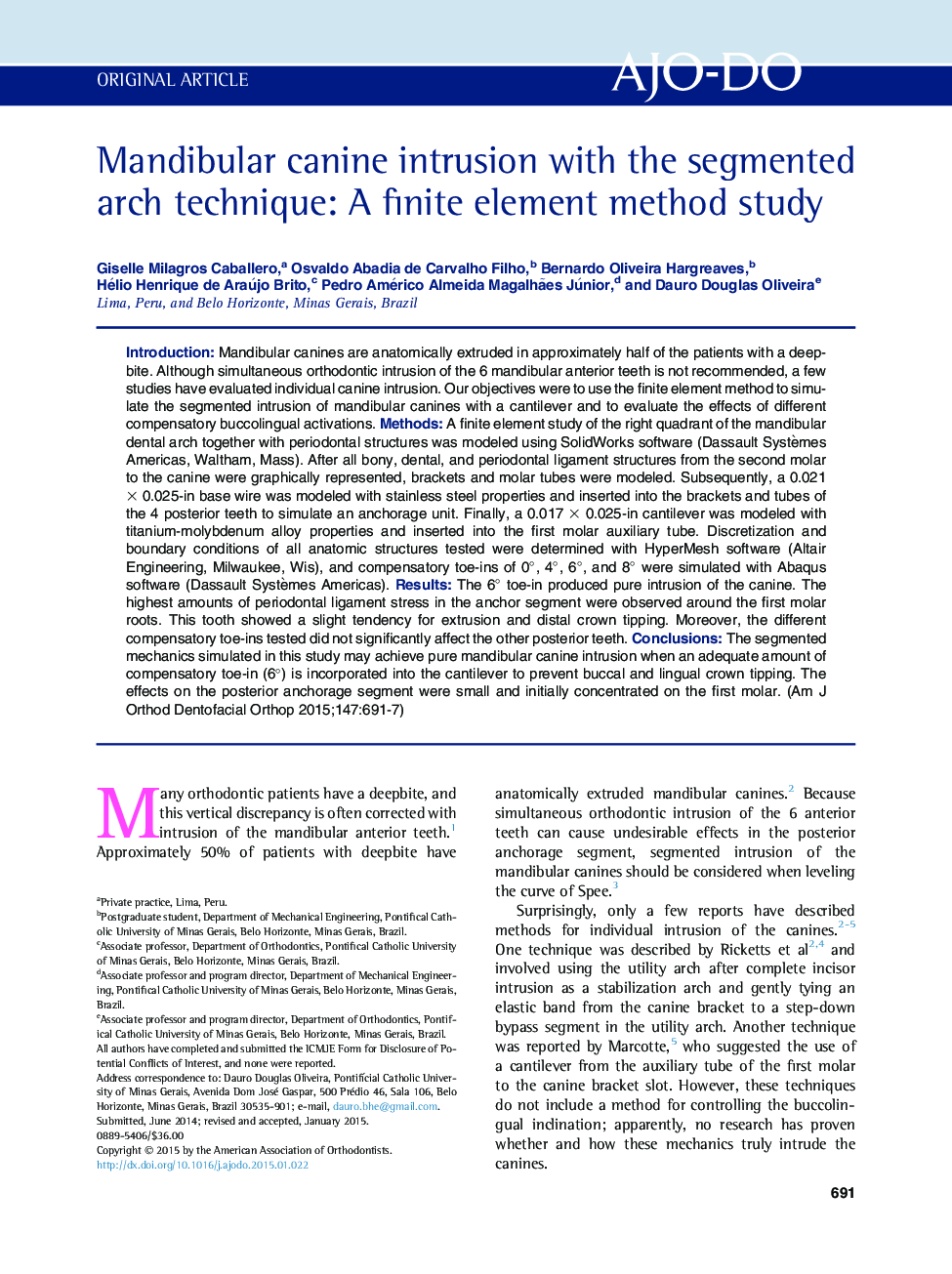| Article ID | Journal | Published Year | Pages | File Type |
|---|---|---|---|---|
| 3116012 | American Journal of Orthodontics and Dentofacial Orthopedics | 2015 | 7 Pages |
•Our results may help orthodontists improve efficiency during leveling of the curve of Spee.•We tested different segmented arch mechanics to achieve pure mandibular canine intrusion.•Compensatory toe-ins are needed to achieve pure mandibular canine intrusion.
IntroductionMandibular canines are anatomically extruded in approximately half of the patients with a deepbite. Although simultaneous orthodontic intrusion of the 6 mandibular anterior teeth is not recommended, a few studies have evaluated individual canine intrusion. Our objectives were to use the finite element method to simulate the segmented intrusion of mandibular canines with a cantilever and to evaluate the effects of different compensatory buccolingual activations.MethodsA finite element study of the right quadrant of the mandibular dental arch together with periodontal structures was modeled using SolidWorks software (Dassault Systèmes Americas, Waltham, Mass). After all bony, dental, and periodontal ligament structures from the second molar to the canine were graphically represented, brackets and molar tubes were modeled. Subsequently, a 0.021 × 0.025-in base wire was modeled with stainless steel properties and inserted into the brackets and tubes of the 4 posterior teeth to simulate an anchorage unit. Finally, a 0.017 × 0.025-in cantilever was modeled with titanium-molybdenum alloy properties and inserted into the first molar auxiliary tube. Discretization and boundary conditions of all anatomic structures tested were determined with HyperMesh software (Altair Engineering, Milwaukee, Wis), and compensatory toe-ins of 0°, 4°, 6°, and 8° were simulated with Abaqus software (Dassault Systèmes Americas).ResultsThe 6° toe-in produced pure intrusion of the canine. The highest amounts of periodontal ligament stress in the anchor segment were observed around the first molar roots. This tooth showed a slight tendency for extrusion and distal crown tipping. Moreover, the different compensatory toe-ins tested did not significantly affect the other posterior teeth.ConclusionsThe segmented mechanics simulated in this study may achieve pure mandibular canine intrusion when an adequate amount of compensatory toe-in (6°) is incorporated into the cantilever to prevent buccal and lingual crown tipping. The effects on the posterior anchorage segment were small and initially concentrated on the first molar.
